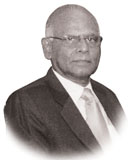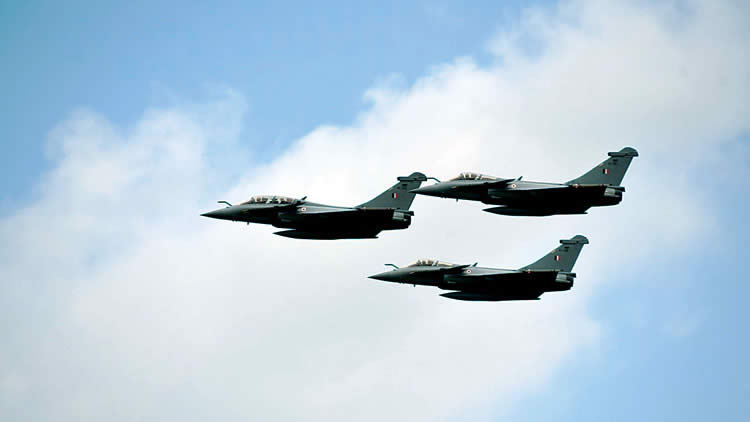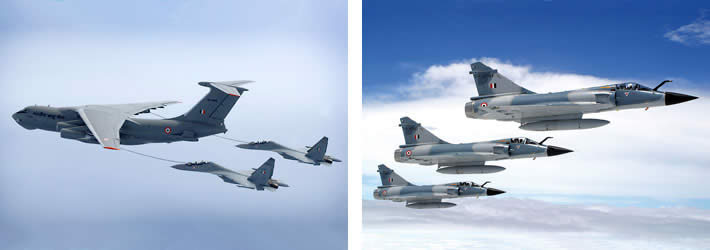INDIAN ARMED FORCES CHIEFS ON OUR RELENTLESS AND FOCUSED PUBLISHING EFFORTS

The insightful articles, inspiring narrations and analytical perspectives presented by the Editorial Team, establish an alluring connect with the reader. My compliments and best wishes to SP Guide Publications.

"Over the past 60 years, the growth of SP Guide Publications has mirrored the rising stature of Indian Navy. Its well-researched and informative magazines on Defence and Aerospace sector have served to shape an educated opinion of our military personnel, policy makers and the public alike. I wish SP's Publication team continued success, fair winds and following seas in all future endeavour!"

Since, its inception in 1964, SP Guide Publications has consistently demonstrated commitment to high-quality journalism in the aerospace and defence sectors, earning a well-deserved reputation as Asia's largest media house in this domain. I wish SP Guide Publications continued success in its pursuit of excellence.
- A leap in Indian aviation: Prime Minister Modi inaugurates Safran's Global MRO Hub in Hyderabad, Calls It a Milestone
- All about HAMMER Smart Precision Guided Weapon in India — “BEL-Safran Collaboration”
- India, Germany deepen defence ties as High Defence Committee charts ambitious plan
- True strategic autonomy will come only when our code is as indigenous as our hardware: Rajnath Singh
- EXCLUSIVE: Manish Kumar Jha speaks with Air Marshal Ashutosh Dixit, Chief of Integrated Defence Staff (CISC) at Headquarters, Integrated Defence Staff (IDS)
- Experts Speak: G20 Summit: A Sign of Global Fracture
EXCLUSIVE
Strong and Potent Aerospace Force
Over the last couple of decades, Indian Air Force has evolved to become strong and potent, capable of mounting operations 24x7 and launching independent operations from a ‘cold start’
 | The Author is Former Chief of the Air Staff, Indian Air Force |

THE THEATRE COMMAND QUAGMIRE
A few days ago, the CDS created a storm during a media interaction on the formation of Theatre Command declaring that the Indian Air Force is (only) a supporting Arm for the Army and Navy. His comments showed ignorance that is not expected from the highest office of the military. Apparently, he was not aware of the limitations and complexity of the Air Force inventory. I wonder how much insight he has on the inventory and operations of the other two Services. The same yardstick should go to assess other proposed Theatre Commanders. They cannot be poorly informed of the inventory, operational procedures, technology employed, communication systems and infrastructure of the other Services if they intend to take them to battle. Selection of the leadership should not be based on seniority but having comprehensive knowledge (Staff College and NDC exposures do not qualify in this regard). If a senior leadership is unaware of the strength, weaknesses and operational ethos of other Services, operations are bound to be affected adversely. Regrettably, the focus seems to be seniority, promotions and appointments and a hunger for power which keeps pushing to bring the Air Force ‘Under Command’. Interestingly, the Navy is not subjected to this ignominy. It’ll be a laugh if a fleet is brought ‘Under Command’ of another Service and deeply regrettable to compare the Air Force to Artillery or Armoured Corps.
Indian Air Force believes in centralised planning at Air HQ while the missions are executed by the concerned Operational Commands – a system followed for decades. Centralised planning helps in monitoring innovation and explore means of countering challenges such as those that may be posed by Chinese Air Force deployed against India and the ways to manage in a two-front war. The Air Force cannot afford to lose aircraft and pilots yet, they have to push home the attack in a 24x7 operation. It is the short-sightedness of the CDS to conclude that since the Air Force assets are distributed between the Air Commands, to move these into designated Theatres should not be a problem.
IAF OPERATIONS - A SPECIALISED FORCE
The Air Force inventory consists of a variety of types each requiring specially trained personnel, spare parts and infrastructure. For example, Central Air Command takes care of Mirage 2000 Squadrons, Aerial tankers, AWACS and few other assets. Similarly, other Commands take care of different assets and may even operate a common type, but their roles may differ. An example is the two varieties of Jaguar aircraft, the Strike and the Maritime variants. The crew of these are differently trained. Expertise of Air Force is specialised in nature. If a Theatre requires Air elements for operations ‘Under Command’, these are required to be drawn from different Commands since a single Command may not have all the required assets. That may mean breaking up a cohesive force. An aircraft on Air Superiority mission can be changed to strike mission and some missions can perform dual role. Ability to switch imposes pressure on training air and ground crew. Furthermore, combat machines allocated to one theatre may have to be switched to another and employed possibly on a different mission. All such decisions require central direction. No elements of Operational inventory of the Air Force should be tied down to one Theatre, because, the same inventory has to be used for other Theatres as well.

If Air Force elements are split and brought ‘Under Command’, the flexibility of operations would be lost, and the asset will be under-utilised. Air Force believes in joint planning through which the objectives and essentials are understood. There is an existing arrangement of integrating Air Force planning staff with the Army Commands. These special cells would absorb the situation, decide on air efforts required and coordinate with Command HQs and get these allocated. It is the integrated approach of Air Force operational staff, engineering and logistics that are expected to function as a well-oiled machinery. Over the last two decades, the Indian Air Force has evolved to become strong and potent, capable of mounting operations 24x7 and to launch operations from a ‘cold start’ independently if required, as was done during the Balakot Strike.
If the three Theatre Commands are to be brought under the CDS, that will be in addition to the SFC and ANC Commands. Besides, the CDS will be continuing to hold his current responsibilities, those that were earlier managed by the Chairman, Chiefs of Staff Committee. Additionally, it is also proposed to bring certain Para-Military Forces and Coast Guard under the Theatres. The large span of responsibilities and over-centralisation of power would seriously impede decision-making and slow down operations. The CDS is bound to get over-burdened.
FORMATION OF AIR DEFENCE COMMAND
Forming a separate Air Defence command for Air Defence of the entire nation from a central location seems an over-kill considering the infrastructure and support required. We have taken years to develop the IACCS and related support system which may require further development to integrate with the Army Air Defence and Coastal Air Defence Assets. Currently, Air Defence de-centralised Command-wise functions smoothly that includes using the Civil Aviation surveillance systems (without brining ‘Under Command’). Having said that, in all these years, we have never been able to sort out connectivity between the Army AD System with that of the Air Force. One needs to get to the bottom of the issues. Majority of the combat element deployed for Air Defence can also perform Offensive Air Defence (Counter-Air) Missions. These could be switched to strike or even a maritime role when needed. The existing structure affords better utility of all the available combat aircraft where few of them get dedicated to Air Defence for a limited period. An independent Air Defence Command will lead to splitting resources and tie-down sophisticated multi-role combat machines to a single role. If our current Air Defence organisation is able to meet the country’s Air Defence requirements while managing the other needs, where is the need to change? The famous saying goes “If it ain’t broke, don’t try to fix it”.





